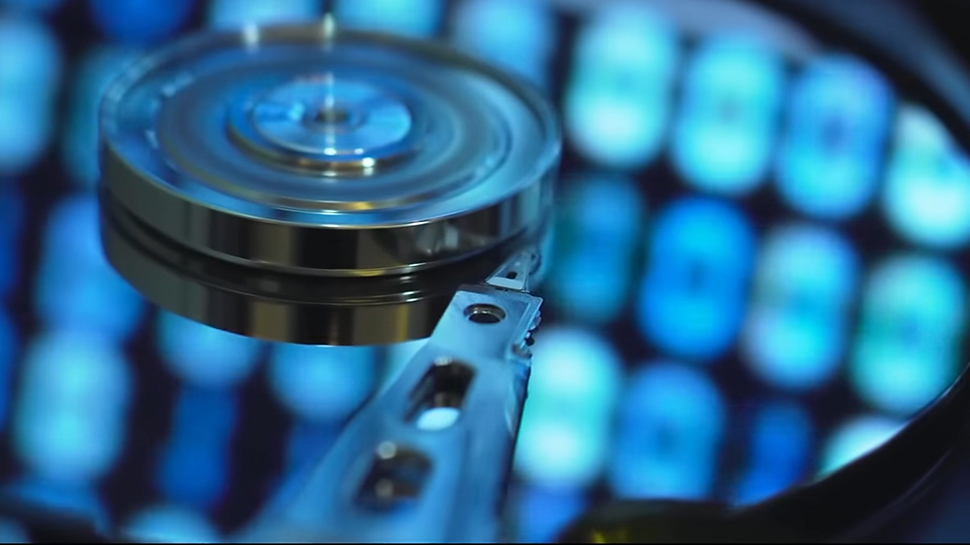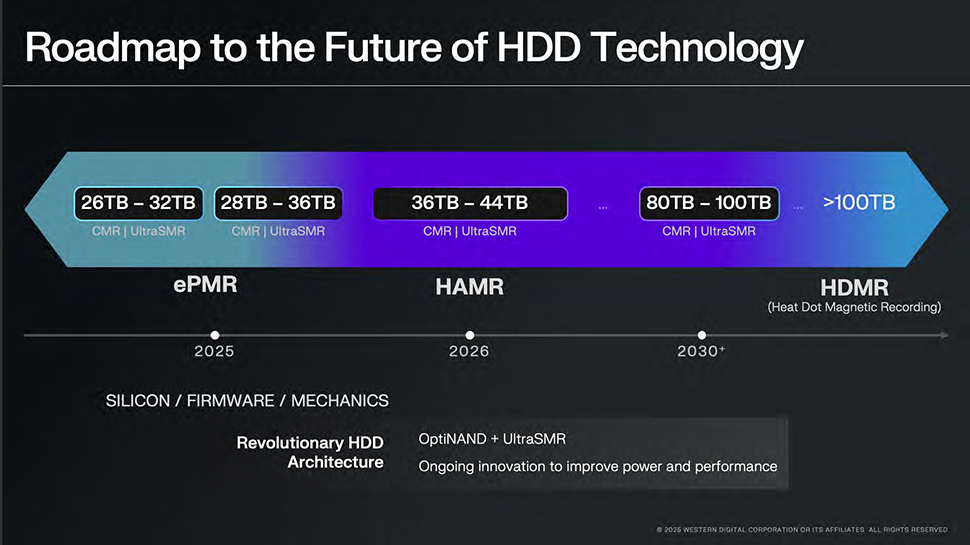
- Western Digital plans to produce 100TB+ HDDs within a decade
- It will do this using HAMR and HDMR heat assisted technologies
- The company is also investigating long-term storage, like ceramics and DNA
Western Digital and Sandisk have begun the process of splitting into separate companies, with the former focused on HDD and platform development, and the latter now all-in on flash products. Both companies recently held investor days, and while Sandisk teased a 1PB SSD and a flash replacement for HBM at its event, WD’s focus was on how it intends to supercharge hard drive capacity within a decade.
The company’s roadmap to the future of HDD technology shows a clear progression from energy-assisted Perpendicular Magnetic Recording (ePMR) to Heat-Assisted Magnetic Recording (HAMR) and ultimately to Heat Dot Magnetic Recording (HDMR), targeting over 100TB capacities.
By 2026, Western Digital says its HDD capacity will reach 36TB-44TB thanks to HAMR technology which uses laser heating to temporarily reduce disk coercivity. This allows for smaller magnetic grains, improving data stability and density while reducing interference, so HDDs can store more data per platter with long-term reliability.

Enter HDMR technology
Western Digital isn’t the only drive manufacturer banking on HAMR to supercharge the capacities of hard drives.
Its big rival Seagate recently debuted a 36TB drive while revealing a 60TB model is coming, and in especially bad news for WD, it also launched a bid to acquire HAMR specialist Intevac whose sputtering machines are used on over 65% of the world’s hard disks. Although Seagate is Intevac’s main customer, WD also uses the company’s tech.
By the 2030s, Western Digital expects HAMR to be superseded by HDMR (also known as bit-pattern recording), which will lead the push for 100TB+ HDD capacities. The tech, which is reported to be quite costly, uses nano-patterned magnetic media with discrete magnetic "dots" to boost data placement, reduce noise, and improve areal density.
Western Digital isn’t only focusing on traditional hard drives, it’s also exploring new growth opportunities. In AI compute, the company is investigating advanced computational models such as Boltzmann and Ising, as well as neuromorphic computing, which could enable more efficient, brain-like processing architectures for AI workloads.
The company is also looking into long-term DNA and ceramic storage, two emerging technologies that have the potential to offer extremely durable and high-density data preservation for archival needs. In the medtech sector, the company is considering developing magnetic biosensors and nanopore technology, which could have significant applications in biomedical diagnostics and personalized medicine.
You might also like
- These are the fastest hard drives you can buy right now
- And these are largest SSDs and HDDs on the planet
- WD told it has a week to pay massive $500 million patent infringement fine







